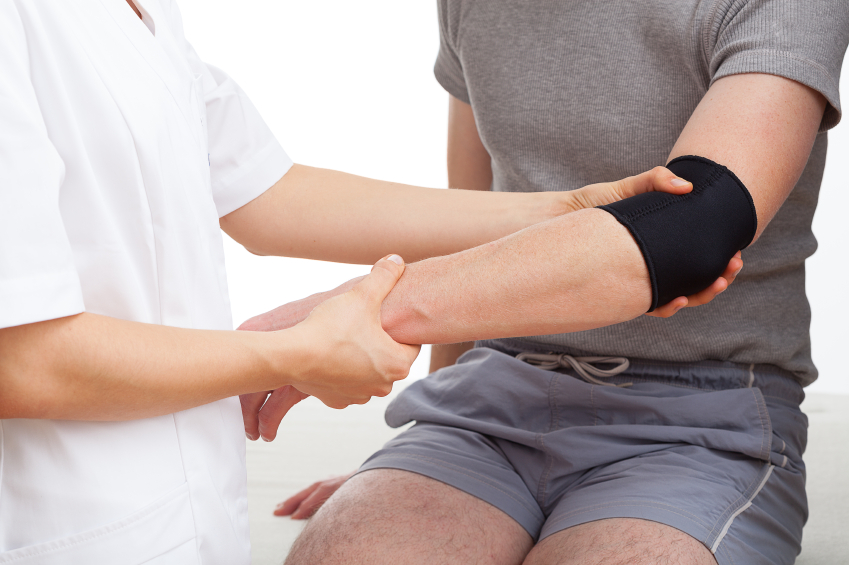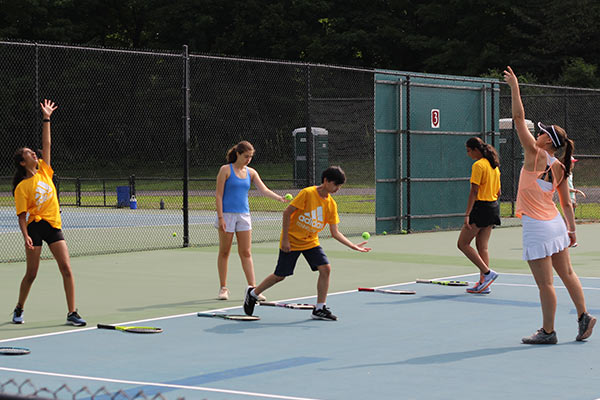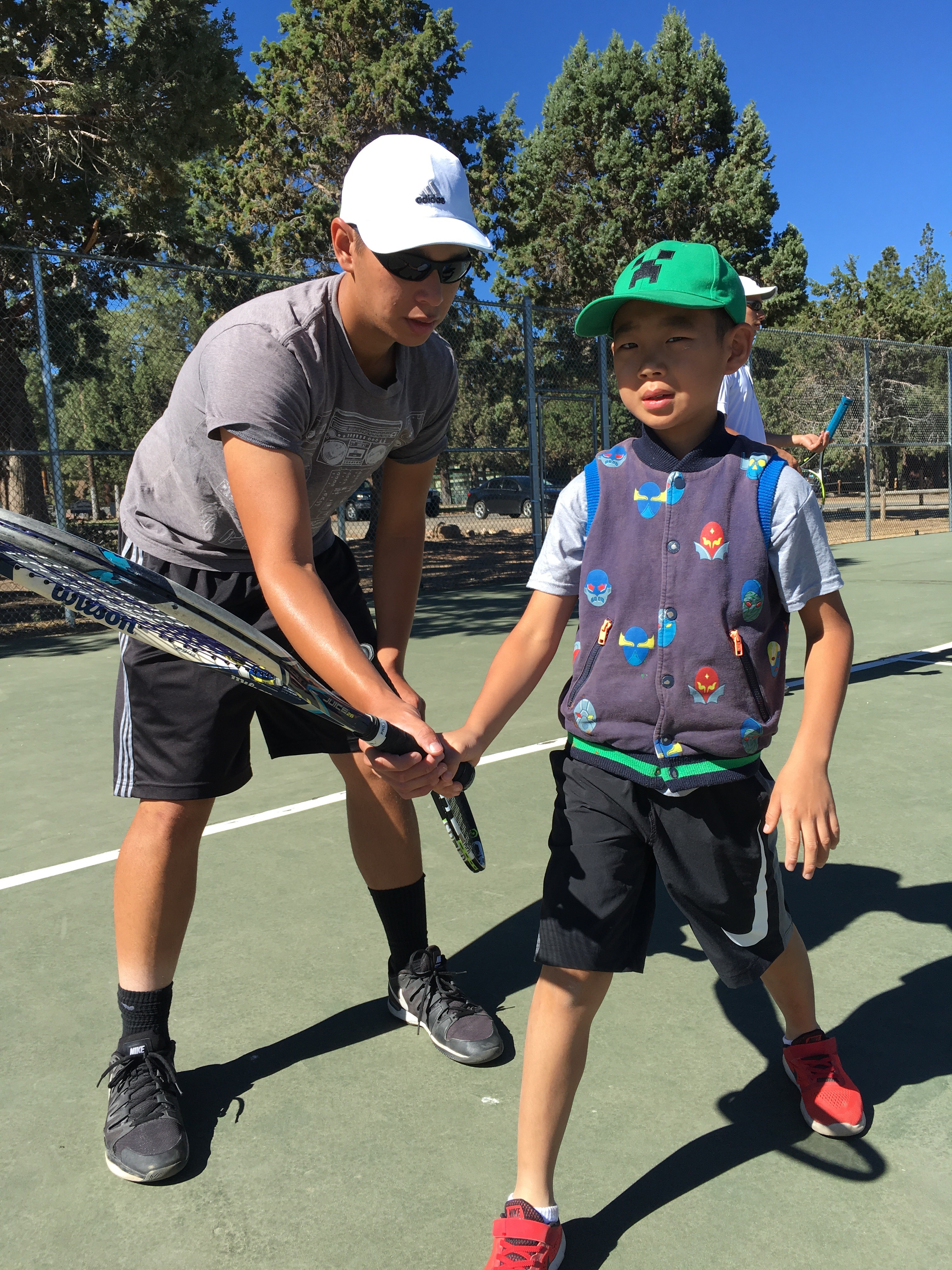How to Avoid Tennis Elbow

Every tennis player aims to improve their game without dealing with pain. Avoiding tennis elbow is crucial because it can cause discomfort and slow you down. Let’s break down some basics around
What is Tennis Elbow?
Tennis elbow is a common problem that often affects avid tennis players. Overuse of the elbow, hand and forearm muscles during long games or extended play can lead to tennis elbow, which affects an area known as the lateral epicondylitis. The lateral epicondylitis is the outside edge of the elbow where muscles meet the bony protrusions of the joint. This area is a key stress point in a variety of tennis swings and can easily get sore after extended play and a lot of repetitive motion.
What are the Symptoms of Tennis Elbow?
People with tennis elbow will experience gradual but increasing outer elbow pain around the elbow joint that gets worse when the player tightens his or her hand around an object such as a racket.
Here are some other signs of tennis elbow:
- Elbow Stiffness: Your elbow is hard to move and doesn’t bend or straighten easily.
- Hand and Wrist Weakness: It’s difficult to grip objects or perform tasks that require strength in your hand and wrist.
- Spreading Pain: The pain begins at the elbow and extends down into your forearm and wrist.
Treatment for Tennis Elbow
The treatment of tennis elbow primarily focuses on relieving pain and restoring the elbow’s normal function. Initially, conservative measures such as rest, ice packs, and over-the-counter pain relievers such as ibuprofen are recommended to reduce inflammation and pain. Physical therapists can play a critical role, instructing you through exercises to stretch and strengthen the forearm muscles. Use of an elbow brace, wrist brace, or elbow strap may also be advised to reduce unnecessary strain on the affected area. For cases that do not respond to these interventions, more advanced treatments like steroid injections, platelet-rich plasma (PRP) injections, or ultrasound therapy may be considered. Surgery is typically seen as a last resort, reserved for those whose symptoms have not improved with non-surgical treatments over a significant period.
Always consult with a doctor if you think you might have tennis elbow and for official guidance on how to best treat tennis elbow.
Tennis camps are a particularly risky time for tennis elbow because players spend much more time on-court during a tennis camp than they ordinarily would at home. It is much easier, however, to avoid getting a bad case of tennis elbow in the first place. Here are some tips and tricks on how to avoid tennis elbow at your upcoming tennis camp:
1) Stretch and Strengthen
Tennis elbow is classified as an overuse injury that occurs when the muscles of the forearm, hand, and elbow essentially give out after excessive stress, especially because of repetitive movements. This is less likely to happen if the hand and arm muscles are conditioned, strong, and flexible both on and off the court. Before you head to your upcoming tennis camp, start building up your tennis muscles so they can stand up to long days spent practicing your swing. A great way to do this is by practicing several simple stretches.
Hold one arm out straight in front of you with your palm facing the ground. Use the other arm to press down on the outstretched hand until the fingers point to the ground. This is called a wrist flexion stretch. Hold this position for three rounds of ten seconds on both sides. Repeat the wrist flexion stretch with the palm facing up to stretch the top of the forearm.
Tennis players should also focus on maintaining fitness in ways that do not place stress on the elbow. Walking, jogging, biking, and resistance training are all great forms of physical activity that can help you to stay fit and avoid on-court injuries. Also avoid spending a lot of your free time playing other racquet sports, such as pickleball or squash.
2) Prep for the Game
Before you play a long game or take part in a clinic or class, spend some time priming your muscles. Grip a tennis ball firmly and squeeze and release the ball for 2-3 minutes in each hand. Take a few rounds of wrist flexion stretches and complete several rounds of wrist rolls by making a fist with the elbows bent at the sides and rolling the fist in a circle five times in each direction.
Although these stretches seem insignificant, getting the blood flow going to your muscles will get them ready for exertion. This is an important preventative tactic that, when done correctly and consistently, can greatly reduce your risk of contracting tennis elbow at your upcoming tennis camp.
3) Practice with a Pro
Sometimes, tennis elbow is due to frequency and intensity of play. Other times, however, it is due to poor positioning or technique by the player. The latter is easily avoidable by training with a certified tennis professional. A professional will be able to critique your style, grip and swing in order to help make sure you are swinging with the proper technique and are not inadvertently making mistakes that are putting you at increased risk for tennis elbow. In addition to keeping you safe, healthy, and happy during tennis camp, a tennis pro will also help you build your skills and fine-tune your game.
4) Use Your Backhand
If you feel yourself starting to get sore during a long game, begin playing with a two-handed backhand in order to allow your muscles a chance to rest and recover. This grip will keep you safe by reducing squeeze-pressure and dispensing stress more evenly throughout the hands, forearms and elbows. Additionally, if you’re not a player who often uses the backhand, this can provide an opportunity to strengthen your swing and diversify your arm movements: a win-win.
5) Change Your Racket
Players who use rackets that have strings strung at very high tension can actually be more likely to experience tennis elbow due to the increased stress each hit produces. In order to further lessen your chances of getting tennis elbow during tennis camp, invest in a high-quality and comfortable racket. Ideally, you want something with a flexible shaft and strings strung at a tension of less than 55 lbs. Pay careful attention to the racket’s grip, too, as it should be soft enough to provide cushion when squeezed.
6) Release the Death Grip and Say Goodbye to Tennis Elbow
During the heat of the game, it can be tough to be mindful enough to release your grip on the racket between hits, but doing so is an important part of keeping your muscles happy during extended play. If you never release your grip on the racket, your muscles never get a chance to relax and, as such, are much more likely to be severely overworked when the game is over. Focus on loosening your grip on the handle during games and try your best to relax your grip just slightly between hits. Another seemingly small trick, this little hint can make a huge difference during a multi-hour game.
Conclusion
For many players, tennis elbow is an unfortunate reality of the game. Some situations, however, put players at increased risk for the muscle overuse that leads to tennis elbow. Tennis camps are prime territory for tennis elbow due to the back-to-back games and extended play times. With a few precautions, stretches and tips, however, you can easily ensure that your court time remains safe, fun and comfortable during your upcoming tennis camp.



